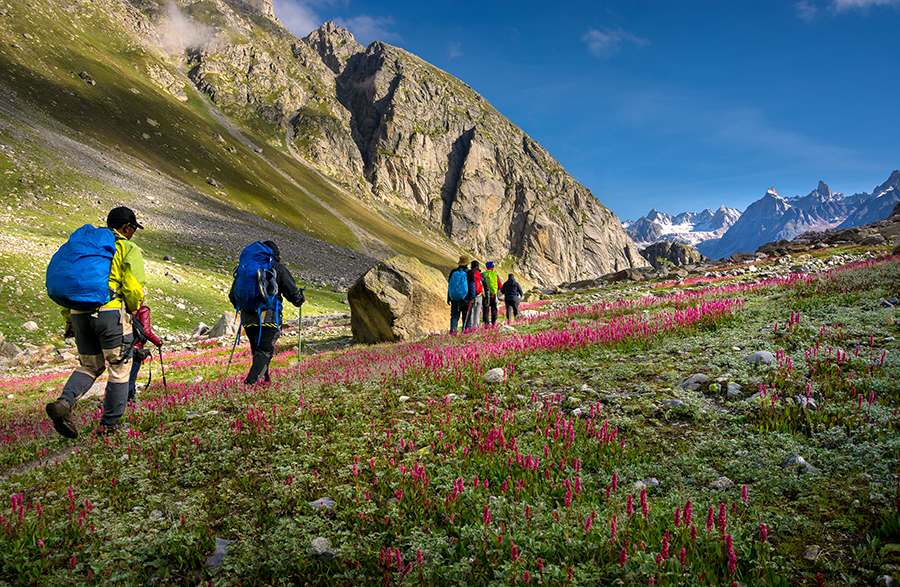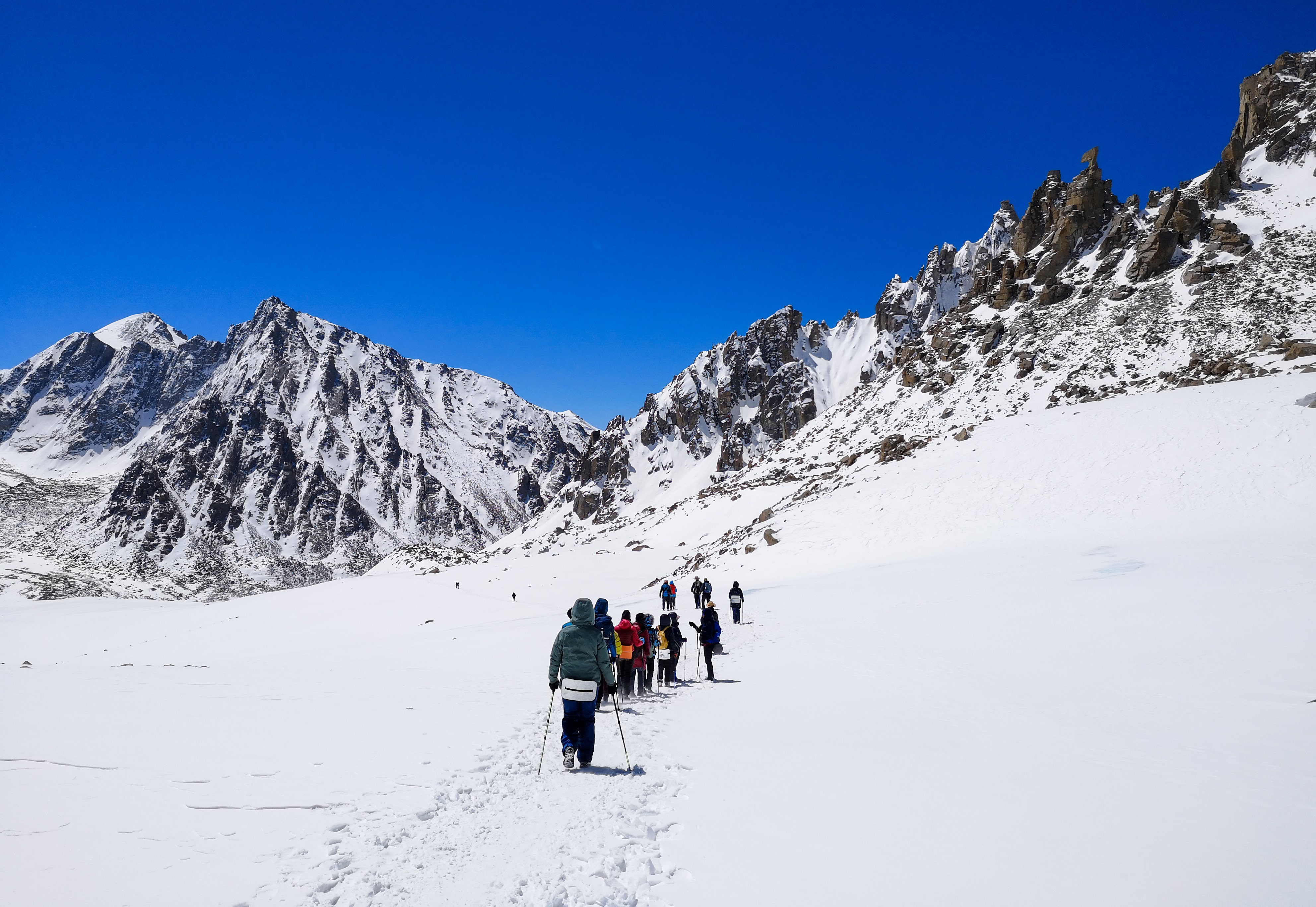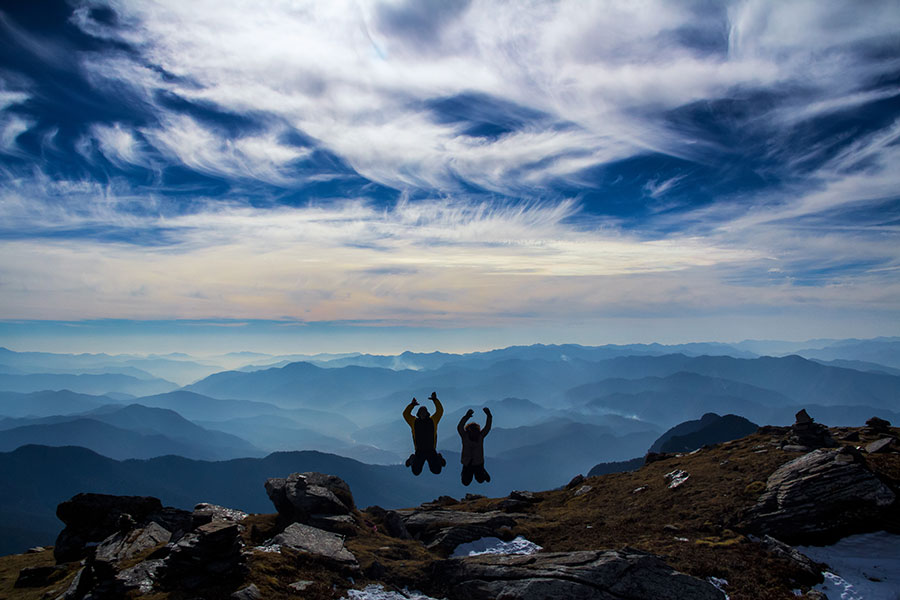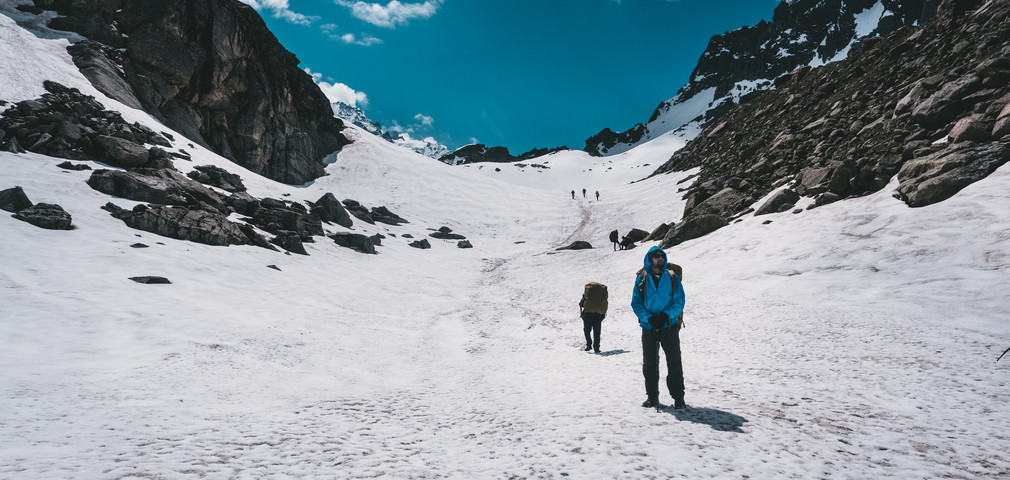Rency Thomas
Latest posts by Rency Thomas (see all)
- Trekking Post Covid 19 – All You Need to Know - June 2, 2020
- Positive Evolution in Indian Adventure Travel – Post Covid 19 - June 1, 2020
- All about the Trekking Poles – Uses & Usages - May 20, 2020
There are lots of confusions and questions around trekking like, when will the trekking start? What all will be the precautions to be taken? Will it get more expensive? Will it be safe to trek? Which company to trust? Things to keep in mind before booking with a company?.. and many more like this. It is a fact that trekking in India is one of the most popular adventure activities which means many people’s earnings are also dependent on this popular outdoor activity/trip.
In the prevailing COVID 19 situation, nobody in their capacity could give concrete foolproof answers, including me. To make life easier for everybody, I have tried to address a few of these uncertainties, from my own experience and from what I have understood after analyzing and speaking with experts in the industry.
1. When will the trekking start?

Irrespective of the lockdown status of different states and the aircraft or trains starting services, trekking operations can be started as soon as the Government gives a nod for tourism activities. It also depends upon when governments of Himalayan states like Himachal Pradesh, Uttarakhand, Kashmir, Ladakh, North Eastern States , or the Western Ghats States like Kerala, Karnataka, Goa, Maharashtra releases their individual advisories for trekking operation and start welcoming the trekkers. These states have the most popular trekking trails like Chadar trek, Sar Pass trek, Hampta Pass trek, Kedarkantha trek, Sandakphu trek etc., respective state governments consent is very important before trekking starts. Whichever state first decides to open their doors for trekkers and rolls out the SOPs and policies, trekking activities will start there with people starting to come.
2. Who will trek First?
Ideally, the one who can drive up to the trek start point in an own or private vehicle from their home would be the safer and first lot. Followed by the people who fly down and drive up to the trek start point in a private vehicle. Slowly and gradually when things get better and the COVID-19 contamination worry reduces, more people will be trekking on different slopes.
3. What are the precautions to be taken by the trekkers?
The trekkers need to take all the necessary precautions advised by the government and shared by the trek operator without any fail. Adding to that few important and general precautions suggested are
- Travel to the trek start point in an own or private vehicle rather than in public transport or shared vehicle
- Carry your own camping gears(Tent, Sleeping Bag, Sleeping Mat, Sleeping Liner, Water bottle, etc) and cutleries(Plate, Spoon, Mug, Fork)
- Sign up for private treks or the treks with small group sizes of 10 to 12 people.
- Priority to be given to the company’s quality in operating treks safely and following the SOPs rather than the pricing where safety could be jeopardized.
- Trekkers need to focus on quality rather than just only the price.
4. What will be the major precautionary steps taken by the companies?
The trekking companies must follow all the general measures advised by the respective governments and the specific trekking operation related measures advised by organizations like ATOAI(Adventure Tour Operators Association of India). The major measures are likely to be and not limited to what is mentioned below.
- The company must have all the transactions and paper works done online to minimize direct human contacts.
- The company should have the capacity to arrange sanitized private vehicles, for transfers from trek start point and endpoint.
- The company must be willing to operate treks for private groups of families or close friends rather than groups of unknown people.
- The treks must have small group sizes, ideally not more than 10 to 12 participants in each group.
- The company must check and record the temperature of every trekker and staff daily, using non-contact thermometers. The data must be made easily accessible to everybody in the team.
- The oxygen level of every trekker and the staff must be checked and recorded daily.
- An evacuation plan followed by a quarantine strategy must be in place in case any member of the team is found to have an abnormal temperature or oxygen levels.
- The company must ask the trekkers to bring their own tent, sleeping mat, sleeping bag and cutleries. Sanitizing these gears everyday and every time after use may not be practically possible in the wilderness but at the same time mandatory in case used by different people on different days. By owning gears and using it personally reduces the chances of contamination.
- The company must provide adequate support and information to the trekkers regarding all the precautions to be taken and about the SOPs.
- The company must provide adequate support in selecting and purchase of equipment.
- The company should provide proper solutions to sanitize the cutlery after every use.
- The kitchen tent and dining area must be well sanitized before and after every use.
Must Read: Positive Evolution in Indian Adventure Travel Post COVID 19
5. Will the trek become more expensive?

Answer to this is quite simple and straightforward ‘Yes‘. If the trek needs to be safe, sanitized, sustainable for the environment and at the same time the trekkers get fun-filled deeper value added adventure experience, the price would definitely spike up. The real question to ask is, is it really worth going outdoors compromising the safety of the people at your service and your own? What about the sustainability of nature? Who will carry back all those extra trash you are taking up in those pristine nature to keep oneself safe from one another? When the number of people in a group reduces for the safety and sustainability, the overheads are not decreasing like the cost of the support staff or the vehicle transferring the group. So it’s obvious that when the cost will be divided between the smaller number of people individual costs go a little higher side.
Another important thing to consider is, the guides and all the trekking staff across the country have been jobless since lockdown. People going on trek is their only source of income. After such a long gap of non employment, the trekkers getting back to slopes is their only hope. In this situation, squeezing their livelihood for the trekkers benefit may not be the right way forward. When the trekkers start looking for deals and cheaper options a crazy price war gets triggered, which ultimately boils down to squeezing the trekking staff’s remuneration or cutting the corners by compromising the safety or hiring less experienced or qualified staff.
6. Which Company to trust?
This is a tricky question and mostly dependent on many factors and your gut feel. But as a rule of thumb, top points you can refer to make the process easy are below. Go with the company or the operator who
- Can show you a track record of safe and value added trek operations through previous customer feedback or reviews in reputed domains like TripAdvisor or Google.
- Voluntarily share the SOP’s and safety precautions followed by them to ensure safe and sustainable trek operations
- Ensure a small group sized and private trek departures
- Has the expertise, knowledge and advised you to opt for less popular and beautiful trails over the crowded famous trails
- Provides or advises you to opt for adventure insurance as a default option or mandatory for the trek
- Proactively provides you all the latest government or governing body advisories and ensure it to be followed
- Not offering illogical discounts and deals which could boil down in compromising the safety.
Conclusion

Whatever happens trekking will be one adventure sport which will catch up really fast, as soon as the situation gets better. There lies a huge responsibility on the companies operating trekking and equal responsibility upon the trekkers. By now all of us must have understood the importance of nature and keeping it intact for our future. Sustainable operations of trekking is inevitable, when we say sustainable it must be giving value added rich experiences to the trekkers without adding further damage to the ecosystem and the local culture or the people.
The trash issue may arise in the post COVID – 19 scenario trek operations due to the extra usages of disposable masks, hand sanitizers, gloves and many other personal protection equipment. Trekkers and the companies must take this additional responsibility of bringing these non-biodegradable materials back from and dispose off the right way. It will also be great if reusable personal protection equipment is used over the disposable and non-biodegradable.
COVID- 19, may give humans one more chance to make things right towards nature, so let us utilize this opportunity in the right way to re-live and re-nurture this world into a better one for our future generations.



